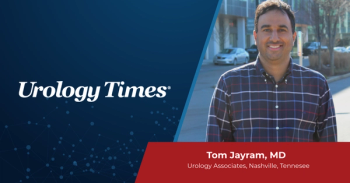
53% of CIS patients achieve complete response with nadofaragene
Nadofaragene firadenovec, a novel intravesical gene-mediated therapy, achieved complete response in 53.4% of patients with bacillus Calmette Guérin-unresponsive carcinoma in situ, according to findings from a phase III trial. First author Stephen A. Boorjian, MD, professor of urology at Mayo Clinic, Rochester, MN, discusses the study results and their implications.
Nadofaragene firadenovec, a novel intravesical gene-mediated therapy, achieved complete response in 53.4% of patients with bacillus Calmette Guérin-unresponsive carcinoma in situ, according to findings from a phase III trial. The drug is currently under FDA review. First author Stephen A. Boorjian, MD, professor of urology at Mayo Clinic, Rochester, MN, discusses the study results and their implications.
Please provide a little background on this agent and some of the previous study data we’ve seen with it.
Nadofaragene firadenovec is an interferon-based adenoviral vector. It is administered into the bladder, or intravesically. It’s given one time every 3 months. The concept is that the agent allows the bladder cancer cells and the normal bladder cells to produce the protein interferon that acts as an anti-cancer agent. By delivering it into the bladder, it creates a local bioreactor to produce interferon. We previously conducted a phase II trial in which we found that 35% of patients treated with the drug were high grade recurrence free at 12 months. That sort of promising preclinical data plus that phase II trial data led to the development of this phase III trial.
What was the design of this current phase III trial?
In the phase III trial, we had 157 patients who were ultimately treated with the drug. It was a single-armed trial. The classification of patients who were eligible for the trial were those with BCG-unresponsive, nonmuscle-invasive bladder cancer, so they had high-grade disease. They had been previously treated with BCG-either two induction courses of BCG, one induction course and maintenance BCG, or they had a recurrence of high-grade T1 disease at the first evaluation after single induction course of BCG.
What were the main findings?
The primary endpoint of the trial was the complete response rate among patients with carcinoma in situ at any point after their treatment. The efficacy results showed that 53.4% of patients with carcinoma in situ achieved a complete response after treatment. That is the trial’s principal finding. The second finding that was of importance was that the responses we saw in this population were largely durable; 45.5% of patients with carcinoma in situ who achieved a complete response maintained that response at 12 months.
Please discuss what the study revealed about the drug’s safety.
The agent was generally well tolerated. There were three patients in total that stopped treatment because of a treatment-emergent adverse event. The vast majority of adverse events that patients experienced during the study were irritative lower urinary tract symptoms, which is to be expected based on the mode of delivery, the patient population, and the bladder cancer diagnosis.
Are there any quality of life data yet?
Not yet. We have the adverse event data in the short term, as we’ve collected here. We don’t have patient-reported outcomes or quality of life data to report at this time. But I think going forward, that’s going to be a very important area to look at, along with the durability of responses as the trial data matures.
What future areas of research do you see being explored following the release of these findings?
There are a number of exciting opportunities that these data show us. I think one area of future investigation may be using biomarkers to help select patients for treatment. One area of future study may be to look at combination therapies with other available agents in this disease space. Another area of potential future investigation may be to look at using this agent in other nonmuscle-invasive bladder cancer disease states. I think there are a lot of exciting directions that this can be taken.
Newsletter
Stay current with the latest urology news and practice-changing insights — sign up now for the essential updates every urologist needs.




















